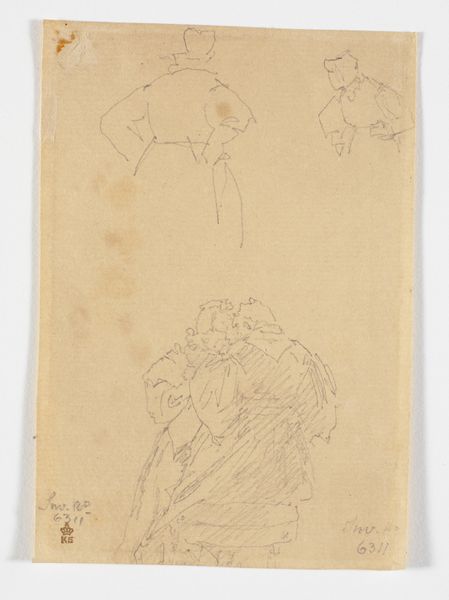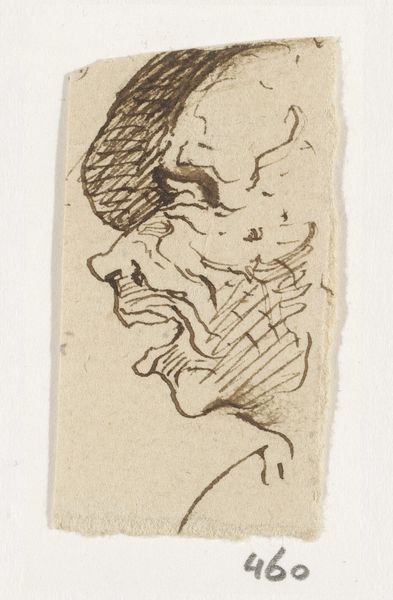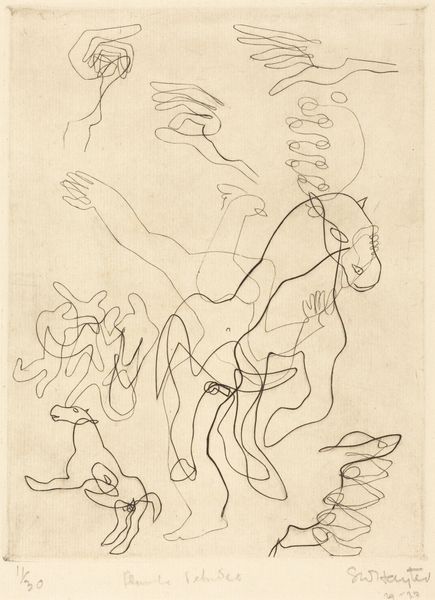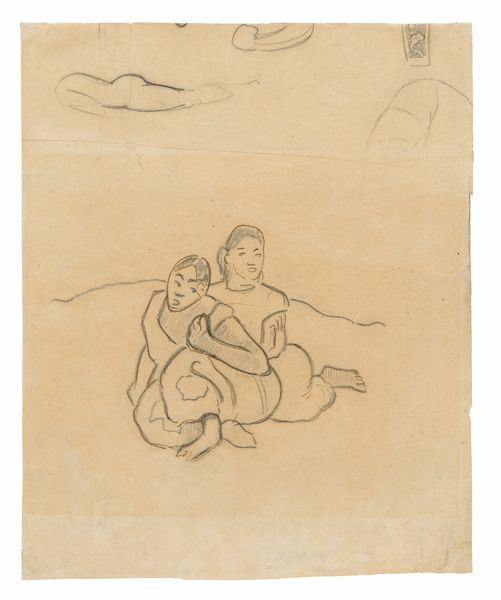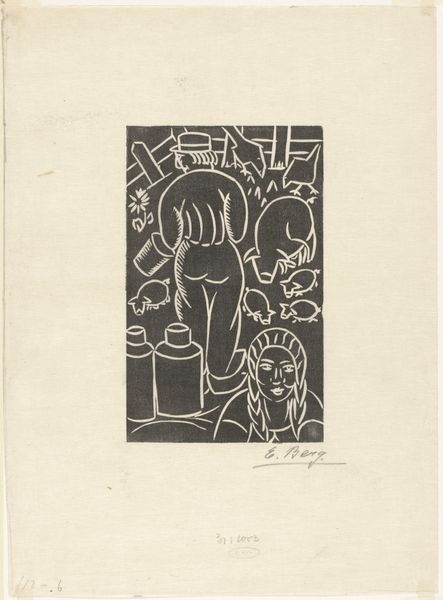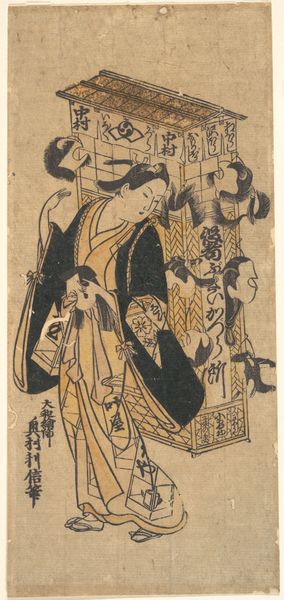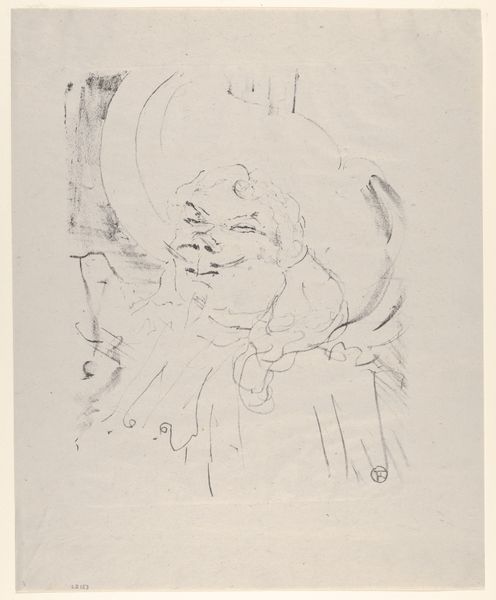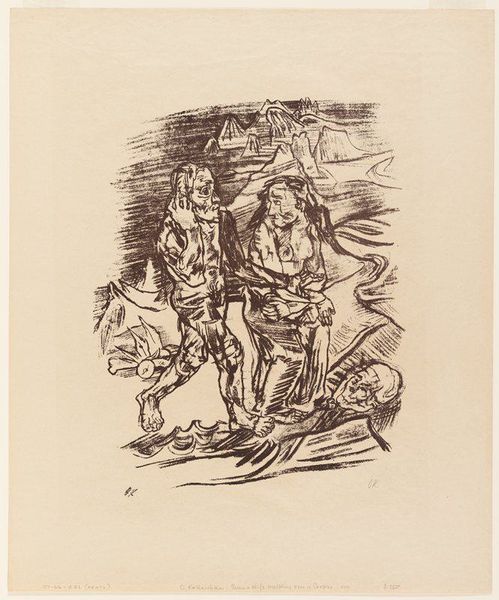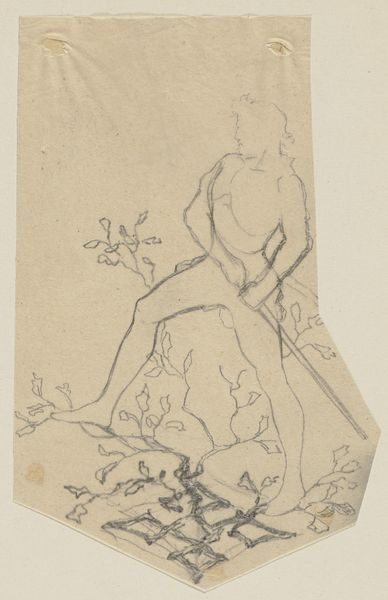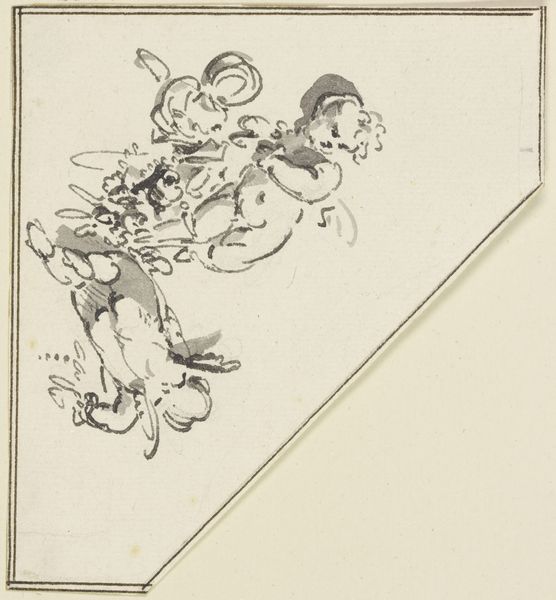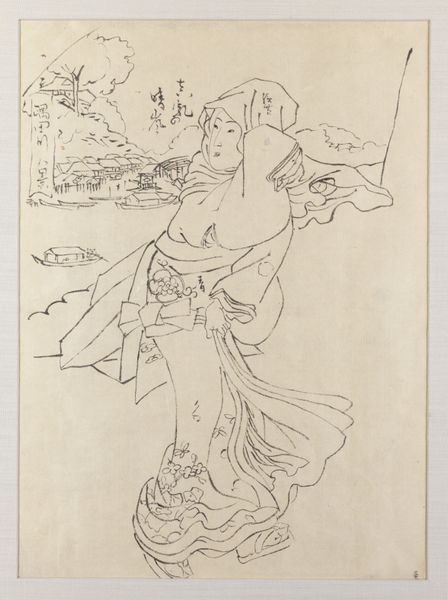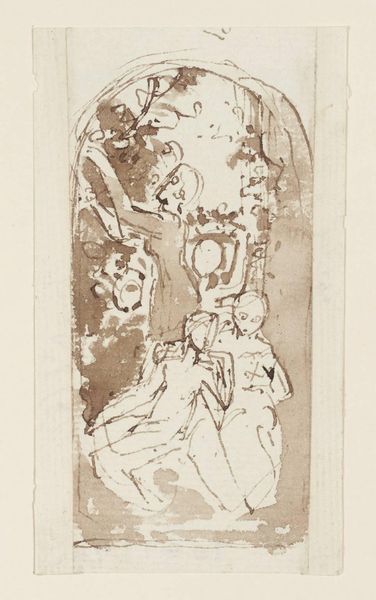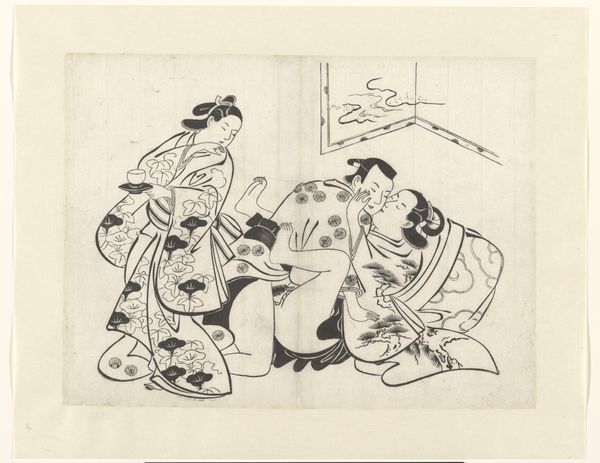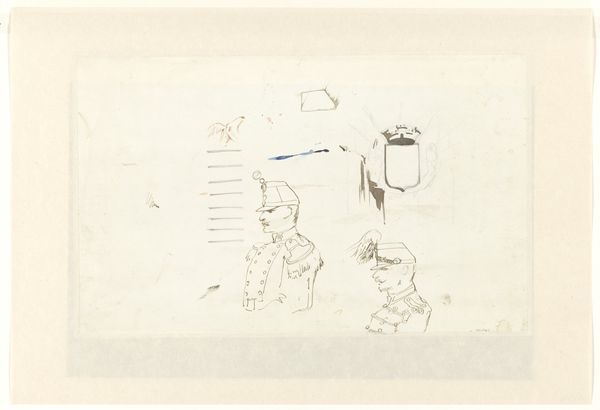
print, woodcut
#
medieval
# print
#
figuration
#
woodcut
#
line
Dimensions: height 128 mm, width 111 mm
Copyright: Rijks Museum: Open Domain
Editor: This is "Nowy Rok Bieży 1946," or "New Year Runs 1946," a woodcut print by Ad. Hoffmann. The stark lines and imagery give it such a medieval feel. It makes me think about hope and renewal after a period of hardship, considering it was made right after the war. What do you see in this piece? Curator: I see echoes of Byzantine iconography, perhaps even a hint of medieval manuscript illustration filtered through a postwar lens. The Madonna and Child are unmistakable, yet there’s a rawness in the execution. The crude lines and stark contrast evoke a sense of urgency. Notice the doves near the bottom of the print – traditional symbols of peace, but they also carry a weight of fragility in this context. I imagine Hoffmann intended this piece to serve as an optimistic memento amidst difficult times. What do the 'rays' around the child evoke to you? Editor: Well, the rays feel almost defiant, like little sunbeams breaking through a dark sky. But the darkness is still visible around them. It's an interesting paradox. It's almost like saying that hope can still prevail amid destruction and anguish. Curator: Exactly. And that push and pull, that visual tension, is what makes this piece so compelling. It’s not a saccharine image of hope; it's a testament to resilience born from struggle, carved with a raw directness. Almost like he's screaming in the silence through the wood. What feelings do you get when reflecting on those ideas? Editor: A new perspective about seeing light coexisting alongside and maybe because of dark. Thank you! Curator: I'm glad to have opened that up to you. A truly great way to view our world around us.
Comments
No comments
Be the first to comment and join the conversation on the ultimate creative platform.
